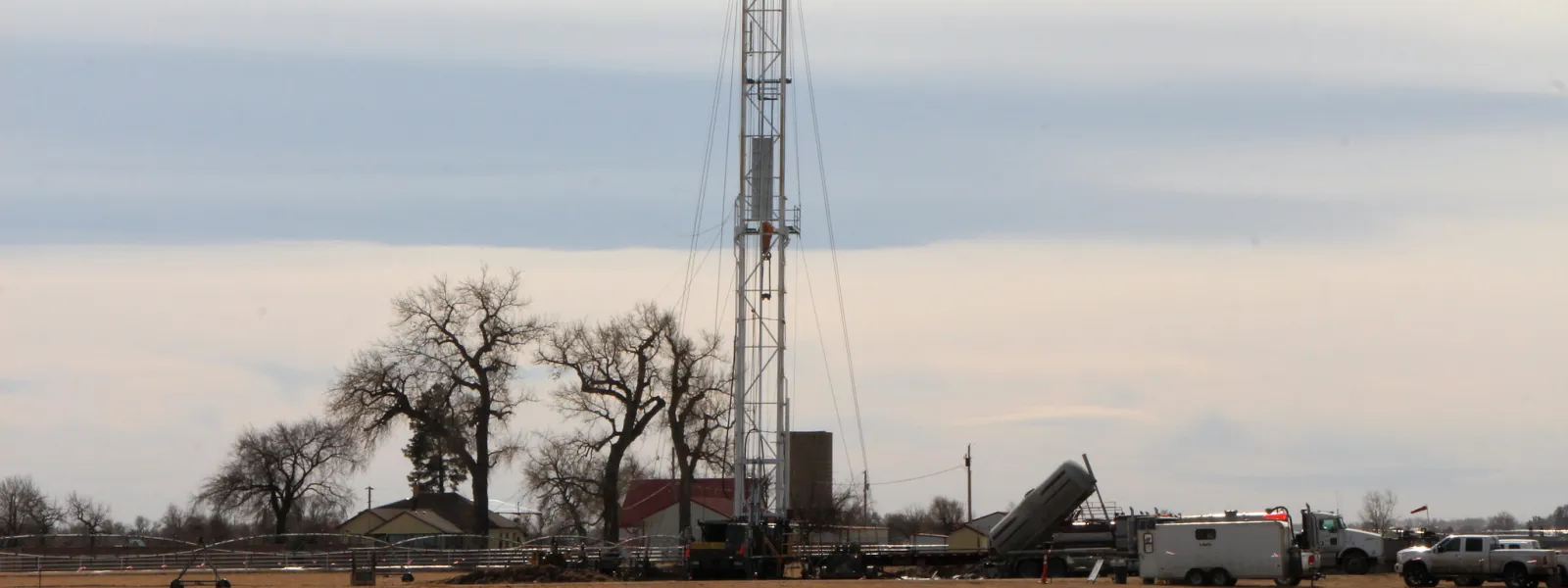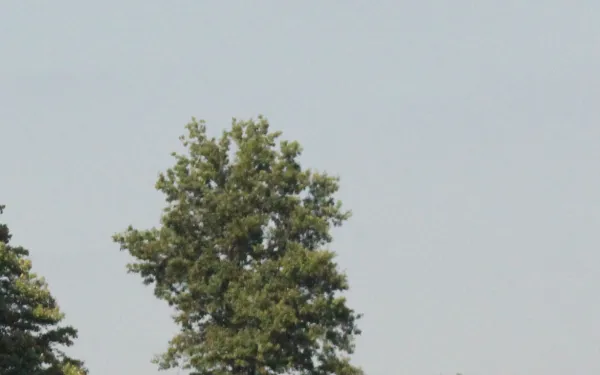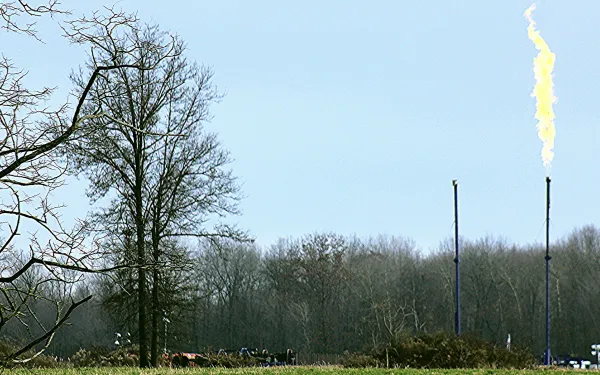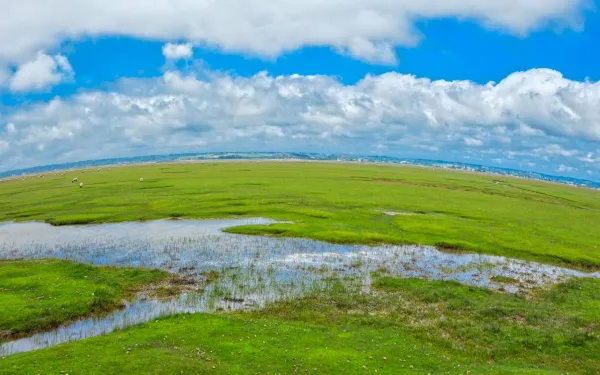
Project
Foto: Andrés ÁngelStopping the spread of fracking in Latin America
“Fracking” is short for hydraulic fracturing, a process used to extract oil and natural gas from historically inaccessible reservoirs.
Fracking is already widespread in the global North, but in Latin America, it is just beginning. Governments are opening their doors to fracking without understanding its impacts and risks, and without consulting affected communities. Many communities are organizing to prevent or stop the impacts of fracking, which affect their fundamental human rights. But in many cases they require legal and technical support.
What exactly is fracking, and what are its impacts?
A straight hole is drilled deep into the earth. Then the drill curves and bores horizontally, making an L-shaped hole. Fracking fluid—a mixture of water, chemicals, and sand—is pumped into the hole at high pressure, fracturing layers of shale rock above and below the hole. Gas or oil trapped in the rock rises to the surface along with the fracking fluid.
The chemical soup—now also contaminated with heavy metals and even radioactive elements from underground—is frequently dumped into unlined ponds. It may seep into aquifers and overflow into streams, poisoning water sources for people, agriculture, and livestock. Gas may also seep from fractured rock or from the well into aquifers; as a result, water flowing from household taps can be lit on fire. Other documented harms include exhausted freshwater supplies (for all that fracking fluid), air pollution from drill and pump rigs, large methane emissions that aggravate global warming, earthquakes, and health harms including cancer and birth defects.
AIDA’s report on fracking (available in Spanish) analyzes the viability of applying the precautionary principle as an institutional tool to prevent, avoid or stop hydraulic fracturing operations in Latin America.
Partners:

Related projects
Latest News

Moratoriums and bans on fracking: Comparative legislation
Hydraulic fracturing is a technique used to extract nonconventional petroleum products, such as tight gas and shale oil, from deep underground deposits. To release these hydrocarbons, the rock formations in which they are trapped must first be shattered into many small pieces. Hydraulic fracturing, or fracking, thus involves drilling 1000 to 5000 meters into the earth and injecting a high-pressure fluid mix of water, sand and various chemicals to fracture the rock and release the hard-to-reach hydrocarbons. This controversial technique has sparked resistance in many communities, regions, and countries where it is causing serious dangers to public health and the environment. Countries, regions, cities and communities around the world have chosen to prohibit or place moratoriums on fracking through various legal and administrative mechanisms. These fracking bans are driven by a number of concerns surrounding the dangers fracking poses to the environment and public health. We would like to point out the following arguments: Above ground and subterranean water sources, air, and soil in the vicinity of fracking operations are at serious risk of contamination. There remains scientific uncertainty regarding of the magnitude of fracking’s impacts on public health and the environment. Measures put in place by the hydrocarbon industry to prevent the impacts of fracking have not yet been proven effective. Moreover, a “general consensus” among actors in the hydrocarbon industry does not guarantee that fracking operations are safe for humans and the environment. There is a serious risk of contamination of soil and water sources in rural and agricultural areas. Fracking impacts communities’ ways of life, and limits consumer confidence that food and agricultural products grown or produced in areas affected by fracking are safe to consume. Fracking emits significant volumes of greenhouse gases into the atmosphere, exacerbating anthropogenic climate change. Among these gases produced by fracking are large volumes of methane, which traps roughly 30 times more heat in the atmosphere than carbon dioxide. There is a large and growing social opposition to fracking, driven by community organizations and citizen mobilization, demonstrating widespread popular opposition to the technique. Indigenous communities like the Cherokee argue that defending their territories against fracking is essential to their continued survival. Most of the moratoriums and bans on fracking surveyed in this report adopt the precautionary principle, either directly referencing the principle or indirectly alluding to it. For example, most fracking bans are based on the possibility of serious and irreversible harms caused by the extraction technique, or on the scientific uncertainty regarding the magnitude of fracking’s impacts. These measures invoke the precautionary principle, which states that in the event a technique could cause serious or irreversible dangers, or if there is a lack of scientific evidence that a technique is safe, decision makers should adopt proactive measures that protect the health of people and the environment above all. However, various measures to ban or pass moratoriums on fracking did first require exhaustive scientific investigations by government authorities to better understand the risks fracking could cause to public health and the environment. Those studies confirmed the serious risks of hydraulic fracturing, but could not prove with certainty the short and long-term impacts of fracking, nor the efficacy of industry efforts to prevent and mitigate those dangers. In a pair of case studies (in Northern Ireland and Wales) government authorities used the precautionary principle to establish a burden of proof, placing the onus on the hydrocarbon industry to clearly and scientifically demonstrate that the proposed fracking activities would not cause serious or irreversible harm to public health or the health of the environment. If the party pursuing hydraulic fracturing could not show evidence-based proof of the safety of fracking in a particular instance, authorities would maintain precautionary measures (such as prohibitions or moratoriums) in order to protect the health of people and the environment. The measures adopted in these cases were formalized via legislation or through orders issued by the executive branch or other administrative bodies. In two of the cases examined (New York and Maryland in the United States), prohibitions or moratoriums on fracking at the municipal level were key to securing political and legal support at larger, regional jurisdictions. Furthermore, social mobilization by grassroots organizations helped amplify and legitimize anti-fracking movements at the national or regional level. In all cases, anti-fracking measures were passed only after mobilizing social resistance to fracking, which built awareness, generated larger movements, and unified voices against the technique. Civil society organizations have employed a diverse and creative array of methods to build support with political actors. Among them are citizens’ legislative initiatives, petitions, letters and meetings with policymakers, marches, strikes and protests, and other collective action. All have proven effective in generating political support to pass fracking bans. The power of social mobilization against fracking has been a deciding factor in many cases in which authorities have recognized that widespread public opposition to fracking is the principal reason to pass local fracking bans or moratoriums. SEE THE REPORT (IN SPANISH)
Read more
How fracking's methane leaks aggravate climate change
I’ve seen them more times than I can remember, but the shock never fades: ten-foot-high flames burning off gas at the BP processing plant in Whiting, Indiana. The facility is close to where I grew up, so we’ve had a lot of time to marvel at the flare stacks. My sister thought they were volcanoes when she was little and, in my family, the name has stuck. Converting waste methane to carbon dioxide (CO2) through flaring is common practice in oil and gas production. This makes “volcanoes” a familiar feature of drilling and hydraulic fracturing, or fracking, fields. The sight of stacks spewing CO2 directly into the air is both visually striking and enraging: a visual metaphor for a world run on extractive, dirty energy. And yet, when it comes to fracking, the volcanoes and their carbon emissions aren’t even the biggest problem. That which is most dangerous is often hardest to see—invisible, in this case. Fracking’s worst air pollution actually occurs through methane leaks. Methane is a greenhouse gas whose global warming potential is 86 times greater than carbon dioxide over a 20-year period, according to the Intergovernmental Panel on Climate Change. It leaks stealthily at every point in the gas supply chain into our atmosphere, undetectable without advanced equipment and frequent tests. According to NASA, the oil and gas industry is responsible for the global rise in methane emissions, beating even landfills and dairy production. Many of these emissions come from leaking pipes attached to fracked gas wells. While many of fracking’s damages—the contamination of water tables, an increase in man-made earthquakes—are well documented, fracking’s air pollution is a more difficult battle to fight. There are no convenient visuals of tap water set on fire or flattened homes. But the fact that we can’t see methane leaking into the air doesn’t make its impact any less intense: diffuse toxic particles grip the throat like so many invisible hands; methane causes nosebleeds and asthma; gas leaks squeeze the brain into dizzying headaches and seizures; toxic additives cause babies to be born prematurely with low birth weight and life-threatening defects. Leaking methane is also of particular concern when it comes to climate change. When just less than 2 percent of a pipeline’s total carried methane leaks into the air, the gas loses its supposed “cleaner” climate advantage over even coal. Recent studies show that U.S. fracking fields leak at tremendously uneven rates, some up to a whopping 12 percent. In other words, only a small number of wells are responsible for an extreme amount of contamination. But this also means that we already have part of the solution: fixing leaks at these super-polluting fields would be a huge boon for climate regulation. Leak detention and repair requires frequent and careful oversight, but it is also cost-effective, and often actually pays for itself. Gas companies can patrol their own distribution lines, looking for and repairing leaks. Pneumatic pipeline controllers can be replaced with better, low-bleed controllers. This extra care, however, is exactly what fracking’s proponents fight against: the gas industry in the United States has long denied and diminished the severity of leaking pipelines. Like the greenhouse gas pollution that causes it, climate change is a slow-paced disaster. It is a long, diffuse emergency that, in a sound-byte world, isn’t dramatic enough for short-term elections and news cycles, and usually isn’t brought up until it’s too late. Alternatives to fracking But times are changing. And the solution to a warming world isn’t just about fixing leaks. We can’t just mitigate a life-threatening system; we have to end it. Instead of perpetuating our dependence on gas, we must invest in a just transition and move into economically sustainable forms of energy, like solar and wind. Gas delivery systems and their maintenance are as expensive as they are toxic, and will soon become obsolete. We must fight for better regulation of our present system, while building up alternatives for a better tomorrow. This is particularly important in parts of the world that are only now starting to embrace fracking. While somewhat ubiquitous in the global North, fracking has only just begun in Latin America, where roughly 5,000 wells have popped up in the past few years. Frontline communities and human rights defenders from across the Americas have fought hard to win bans or restrictions on fracking. They urge that their nations not fall for fracking’s trap—harms would be amplified by lax regulation and further aggravate climate change. In October they testified before the Inter-American Commission on Human Rights on the harm fracking has caused to communities across Latin America. Liliana Ávila, a senior attorney at AIDA, explained that fracking-induced pollution impacts basic human rights, and that environmental defenders often face extreme violence when protecting their territories from the gas industry. Part of the battle for a global and just transition towards a sustainable, equitable energy economy is being able to recognize those harms that are harder to see—including those that are invisible at first. It’s the quiet harms that unfold over long time spans that are catching up to us now.
Read more
Why we’re working for climate justice in Latin America
“The world has many problems, but to me none seem as ubiquitous or as dangerous as climate change,” says AIDA attorney Florencia Ortúzar. “It really is the great challenge of our generation.” At AIDA we understand the magnitude of the problem. That’s why we incorporate climate justice as a key concept in all our lines of work. It’s why we advocate for sustainable development that respects the environment and the rights of vulnerable communities and, at the same time, why we work to stop climate-aggravating activities. “What motivates me to fight climate change is my awareness of the huge problem we’re facing, and my steadfast determination—I know we can’t give up,” Florencia says. She shares that motivation with AIDA’s entire team of attorneys, scientists, communicators, fundraisers and administrators. When she was a child, Florencia received a very special gift from her father: a badge that said “world saver.” That very day, on a beach in her native Chile, Florencia hooked the badge to her clothes and began picking up trash, cleaning the beach. That small gift jumpstarted her life’s mission. Florencia went on to study law, with the goal of working for the protection of forests, rivers, animals, and all the elements of the natural world. “Luck was with me when I found AIDA, the organization that has trained me and has enabled me to make my contribution to a better world,” she says. Florencia is part of AIDA’s Climate Change program. Our objective is to help Latin America—one of the regions most vulnerable to the climate crisis—be a leader in the type of changes required on a global level to avoid catastrophe. In partnership with allied organizations and hand-in-hand with communities, we work to stop the blind advance of fracking and large dams, mega-projects which imply significant emissions of methane, a greenhouse gas 34 times more powerful than carbon dioxide. We also work to raise awareness and educate public policy makers on the importance of controlling short-lived climate pollutants. We seek to protect terrestrial and marine ecosystems that capture carbon emissions—such as coral reefs, mangroves, wetlands and páramos—which, in turn, helps to mitigate climate change. We monitor international climate negotiations, advocate for Latin American nations to have the necessary economic resources to deal with climate change, and work to ensure that climate finance respects human rights. “Although many of the effects of climate change are inevitable, and may already be occurring, the efforts we make to stop the problem and to adapt to it will help future generations, who had nothing to do with causing the problem,” Florencia explains. She shares her message wherever she goes, encouraging others to join the fight. “I refuse to be part of the last generation to enjoy the natural wonders of our planet.”
Read more